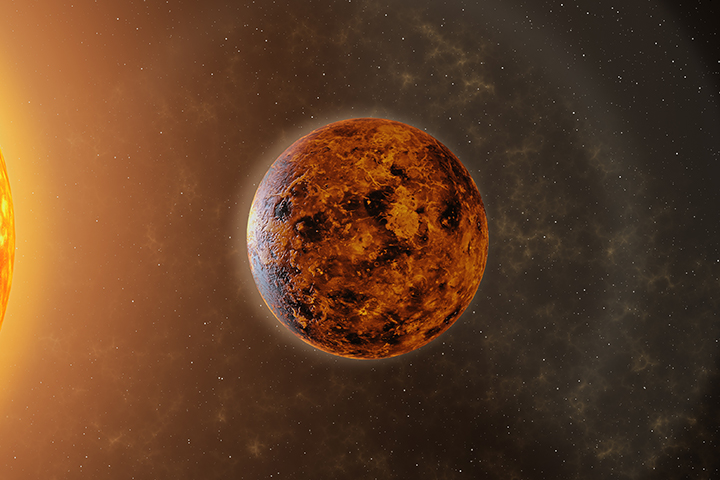Venus is the hottest planet in our solar system with a surface temperature of over 450 degrees celsius

Venus: The Hottest Planet in Our Solar System

Venus, our neighboring planet, has long fascinated astronomers and scientists alike. With its scorching surface temperature of over 450 degrees Celsius, it holds the title for being the hottest planet in our solar system. In this article, we will delve into the fascinating characteristics of Venus and explore why it maintains such an extreme climate.
Venus, named after the Roman goddess of love and beauty, is often referred to as Earth’s twin due to its similar size and composition. However, despite these similarities, the environmental conditions on Venus are vastly different from those found on Earth. While Earth possesses a hospitable atmosphere and a moderate climate, Venus is cloaked in a thick and toxic atmosphere that contributes to its extreme heat.

So, what causes Venus to be so exceptionally hot? The primary factor is its dense atmosphere, composed mainly of carbon dioxide with traces of nitrogen and other gases. This thick blanket of greenhouse gases traps solar radiation, preventing it from escaping back into space. As a result, the greenhouse effect intensifies on Venus, causing a relentless rise in temperature.
Furthermore, Venus experiences a phenomenon known as a runaway greenhouse effect. As the planet heated up, the increased temperatures caused more carbon dioxide to be released from its crust and oceans. This, in turn, further enhanced the greenhouse effect, leading to a perpetual cycle of heating. As a consequence, Venus’ surface temperature soared to the staggering levels we observe today.
The atmospheric pressure on Venus is also incredibly high, approximately 92 times the atmospheric pressure on Earth’s surface. This immense pressure further contributes to the extreme temperatures. The thick atmosphere acts as a barrier, trapping the heat close to the planet’s surface and preventing any significant cooling.
Venus’ climate is also marked by violent weather patterns, including hurricane-like winds that can reach speeds of up to 450 kilometers per hour (280 miles per hour). These powerful winds circulate around the planet, mixing the atmosphere and redistributing the immense heat.
While the scorching temperatures make Venus inhospitable for life as we know it, studying this hostile planet provides valuable insights into planetary science and the mechanisms that govern our solar system. Scientists continue to explore Venus in depth through space missions and observations, hoping to unlock more secrets about its origin, evolution, and potential past habitability.
In conclusion, Venus, with its surface temperature exceeding 450 degrees Celsius, holds the record as the hottest planet in our solar system. Its dense and toxic atmosphere, combined with a runaway greenhouse effect, contribute to the extreme heat experienced on the planet’s surface. Despite the inhospitable conditions, Venus remains a captivating subject of research, providing valuable knowledge about planetary dynamics and the delicate balance required for life to thrive.
Source: World Atlas
Tags
Share
Related Posts
Quick Links
Legal Stuff

